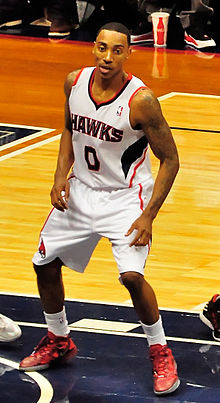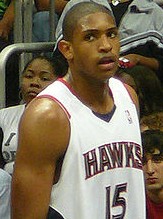 When interviewed back on October 1, Atlanta Hawks guard Jeff Teague said he was most looking forward to using his team’s speed to create easy opportunities for transition baskets.
When interviewed back on October 1, Atlanta Hawks guard Jeff Teague said he was most looking forward to using his team’s speed to create easy opportunities for transition baskets.
“Speed kills,” said Teague. “And our team has a lot of speed.”
Fast-forward three months, and it is apparent that Teague’s prediction was spot on. Atlanta’s speed has been deadly on both defense and offense. The Hawks rank among the league’s top teams in turnovers forced, assists and fast-break points.
But nationally, nobody much cares.
Why is that when it comes to the Hawks?
To many, Atlanta’s success has been the biggest surprise of the Eastern Conference’s first semester. After the team traded away Joe Johnson and Marvin Williams over the summer in moves that will save the organization nearly $80 million over the next four seasons, analysts expected a serious drop-off. After all, Johnson was an All-Star and go-to scorer while Williams had finally found his niche in Atlanta as a dynamic wing defender.
Thirty-three games into the 2012-2013 season, however, it is apparent that the Hawks are every bit as good – if not better – than they were last season.
How have the Hawks managed to avoid the slide in the standings?
 For starters, Al Horford has recovered from a torn pectoral muscle that limited him to just 11 games last season. At full health since the start of training camp, Horford has been playing the best ball of his career and is leading the team in rebounds (9.8). Averaging a career high in points (15.9), Horford has also embraced a bigger role in the offense in Johnson’s absence.
For starters, Al Horford has recovered from a torn pectoral muscle that limited him to just 11 games last season. At full health since the start of training camp, Horford has been playing the best ball of his career and is leading the team in rebounds (9.8). Averaging a career high in points (15.9), Horford has also embraced a bigger role in the offense in Johnson’s absence.
Moreover, Horford’s veteran presence in the locker room has been integral in uniting a roster composed of mostly new faces.
Atlanta’s success, however, has been the result of more than just one player’s health.
Much of the credit for Atlanta’s strong play can be attributed to general manager Danny Ferry’s thrifty dealing last summer.
Entering the organization with Horford and Josh Smith on the roster, Ferry knew he wanted to use his big men’s speed and passing abilities to the team’s advantage.
To increase the team’s offensive tempo, Ferry sought to complement Horford, Smith, and Teague with several scorers who could also facilitate the offense. On July 3, Ferry traded for a former All-Star in Devin Harris. One week later, Ferry signed Sixth Man Award runner-up Lou Williams to a three-year deal. With Harris and Williams, Ferry brought in two guards who were both capable of filling the scoring and distribution void that Johnson’s departure created.
The plan has exceeded expectations: between Teague, Williams and Harris, the Hawks average nearly 13 assists a night from the point guard position. More importantly, when the postseason comes, the Hawks will now have three guards with past playoff experience at their disposal as primary ballhandlers.
To enhance his up-tempo vision, Ferry acquired a plethora of 3-point specialists to help space the floor. By selecting John Jenkins in the first round of the draft and acquiring Anthony Morrow in the Johnson trade, Ferry added two of the best shooters in the league within his first week on the job. For good measure, Ferry went on to trade for one of the best shooters in NBA history, Kyle Korver, just 10 days later.
The Hawks’ high-octane attack ranks fourth in the league, averaging 23.3 assists a night. Shooting has been equally impressive.
Wow, Jacob, that was fast. It only took a week to prove you were 100% wrong. What do I win?
Please, kiddo. Are you Ferry’s publicist, or what? Ferry is one of the NBA’s biggest dolts, and on top of that, agents can’t stand the arrogant SOB. Within two to three years, you’ll plainly see why James had to flee Cleveland.